Photo
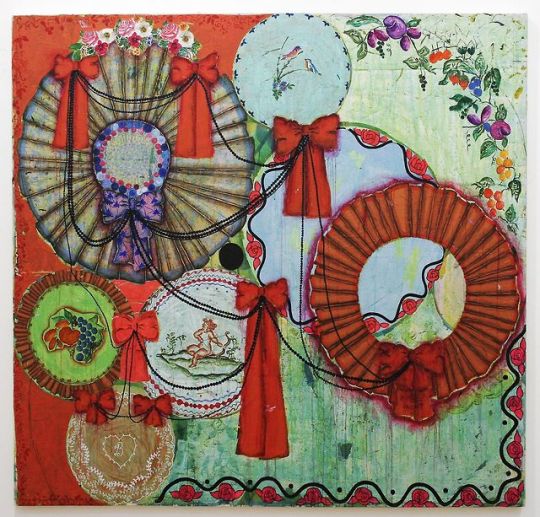



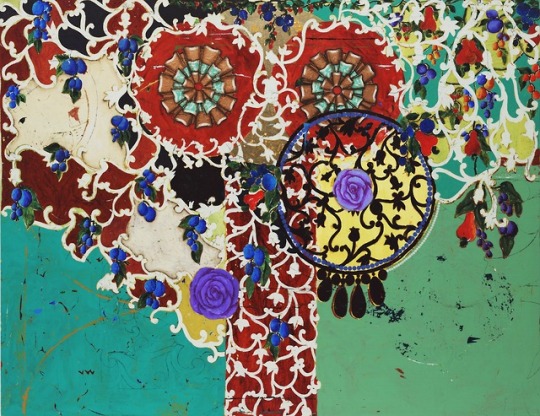

Beatriz Milhazes (Brazilian b. 1960). Early in her career, Milhazes developed an unusual paint transfer technique where individual image components are painted, using acrylic paint, onto sheets of polyethylene. These painted motifs are allowed to dry and then “glued” onto the surface of the canvas using acrylic medium. The polyethylene plastic can be easily peeled away once the acrylic medium adhesive dries, leaving behind the flat, smooth layer of transferred paint.
The advantages of this collage-like technique include the ability of the artist to compose the painting by temporarily tacking the painted sheets to the canvas, moving and rearranging the separate elements until she arrives at the final composition. The almost haphazard layering of the individual elements in these earlier paintings seems to mimic the way visual decor tends to collect on old walls in urban environments. The artist often seems to favor compositions built around a central vertical. The dominance of this central axis is challenged by the accumulation of added circles, floral motifs, and scrollwork.
The earliest of these paintings have features she has maintained in her work to the present day: a penchant for botanical imagery, rendered in a Latin American vernacular style, and a Baroque compositional sense. Some of the paintings in this group have layers of drippy, transparent wash that appear to have been applied directly over top of the transferred images with a brush.
Lovers in the Air 1993. Acrylic on canvas, 66 7/8 x 70 7/8 inches. Source.
Crianças fizeram um homem de neve [Children Made a Snowman] 1993-94. Acrylic on canvas, 61 x 64 inches. Source.
Santa Cruz 1995. Acrylic on canvas, 76 ¼ x 120 ¼ inches. Solomon R. Guggenheim Museum, New York.
Madame Caduvel 1996. Acrylic on canvas, 62 ½ x 70 ¾ inches. Source.
Succulent Eggplants 1996. Acrylic on canvas, 74 ¾ x 96 ½ inches. Museum of Modern Art, New York.
A Praia [The Beach] 1997. Acrylic, metallic paint, and metal leaf on canvas; 102 x 33 7/8 inches. Metropolitan Museum of Art, New York.
3 notes
·
View notes
Video
A short video demonstrating the technique Beatriz Milhazes uses to transfer acrylic paint from plastic to the surface of her canvas. I should have given the medium a few more hours to dry, but I was trying to finish before the sun went down. Waiting overnight is a good idea if you’re uncertain.
1 note
·
View note
Photo
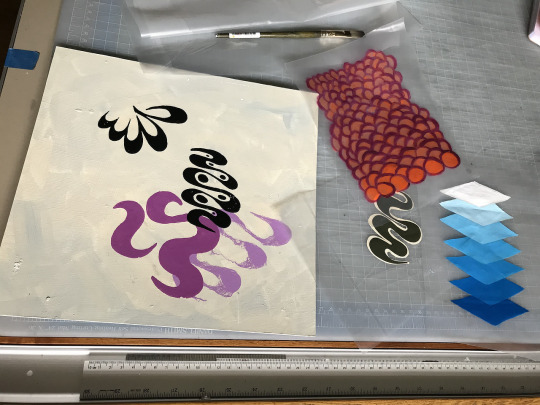


Transferring acrylic paint from plastic to the surface of a painting. The plastic used is polyethylene, the hazy plastic sheeting sold in the paint section of hardware stores. Visqueen is a brandname for this kind of sheeting, and has become a household name as well. I buy it to wrap my paintings for storage and shipping, so I usually have rolls of it around the studio.
At top is my sample board, along with some additional patterns my daughter painted on plastic.
The second image shows two sides of a painted motif. At left is the motif seen through the plastic. I used two colors here to demonstrate how multicolored motifs need to be painted with the topmost color coming first. The painted side of the plastic, seen on the right, is the part that gets glued down to the surface of the painting with acrylic medium.
At bottom, the smooth, flat surface of the transferred motifs.
0 notes
Photo
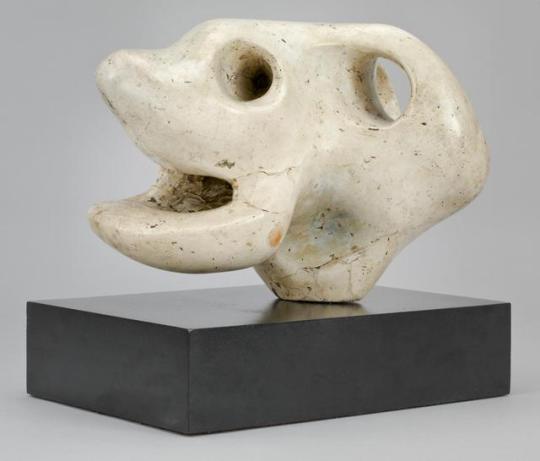
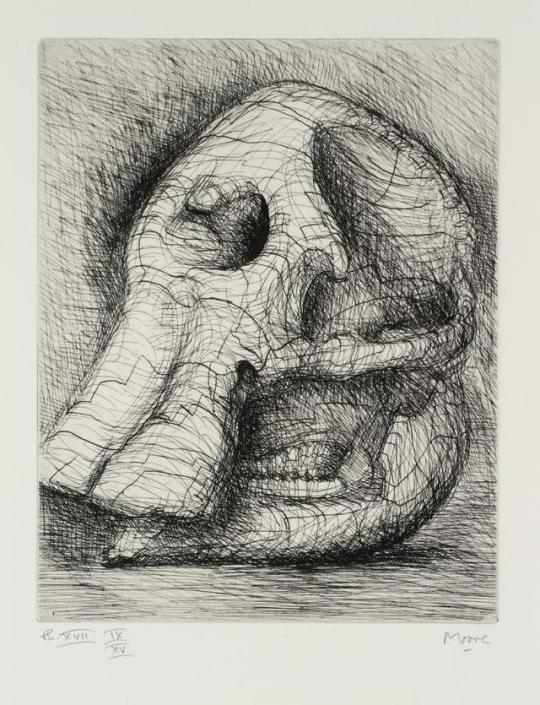
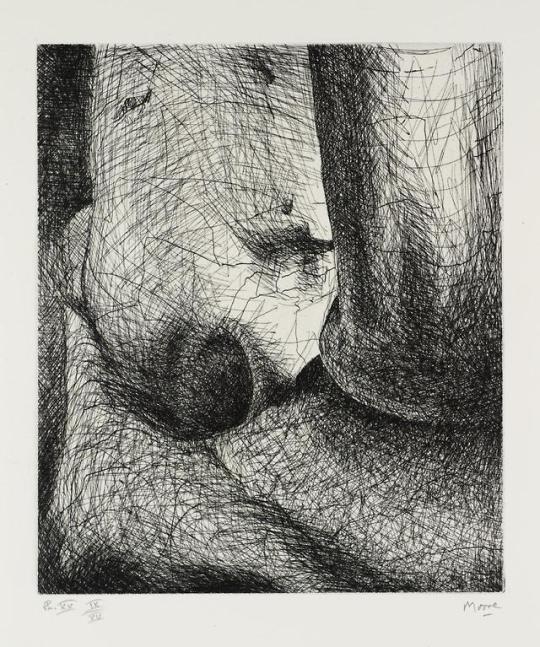
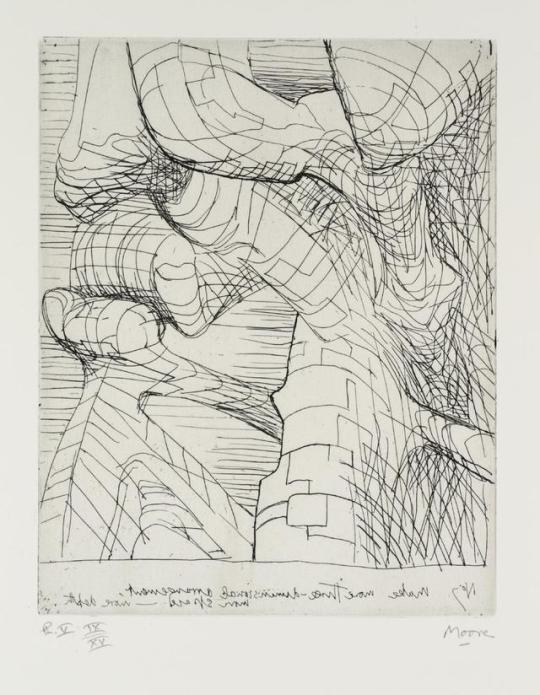
Henry Moore (British 1898-1986). The term biomorphic abstraction is used to denote abstract art that appears to have a relationship to the animal world as opposed to geometry, landscape, or architecture. Obviously, organic forms and geometric shapes can coexist in a given painting or sculpture, but certain artists become known for their preference for the biomorphic, and sculptor Henry Moore was one of them. I first saw his set of Elephant Skull Album prints as an art student, when one of my professors presented them as a way of helping young artists to find their way into abstraction through observation. Moore’s depiction of the elephant skull becomes increasingly cropped and abstract over the course of the series. Organic, bone-like forms had long been the main focus of his work; he encountered the elephant skull relatively late in his career.
Animal Head 1951. Plaster, 10 ½ x 8 ½ x 11 ½ inches. Tate Gallery, London.
Elephant Skull Plate XVII 1969 (From Elephant Skull Album). Intaglio print on paper, 10 x 8 inches. Tate Gallery, London.
Elephant Skull Plate XX 1969 (From Elephant Skull Album). Intaglio print on paper, 11 x 9 ¼ inches. Tate Gallery, London.
Elephant Skull Plate V 1969 (From Elephant Skull Album). Intaglio print on paper, 10 x 8 inches. Tate Gallery, London.
2 notes
·
View notes
Photo
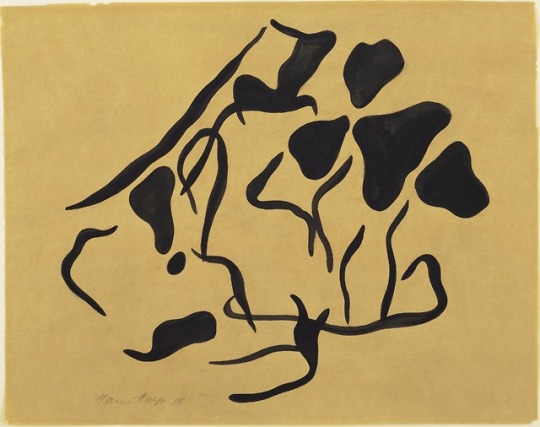

Jean (Hans) Arp (French, born Germany 1886-1966). Arp’s soft, rounded shapes do necessarily not come from the direct observation of nature, but are nevertheless suggestive of plant and animal forms. Working in the Dada/Surrealist manner, he experimented with unconscious mark-making, as in the “automatic drawing” at top. These works are quite different in feel from the geometric abstraction and machine-aesthetic work of Arp’s contemporaries.
Untitled (Automatic Drawing) 1917-18 (inscribed 1916). Ink and pencil on paper, 16 ¾ x 21 ¼ inches. Museum of Modern Art, New York.
Birds in an Aquarium c. 1920. Painted wood, 9 7/8 x 8 x 4 ½ inches. Museum of Modern Art, New York.
1 note
·
View note
Photo
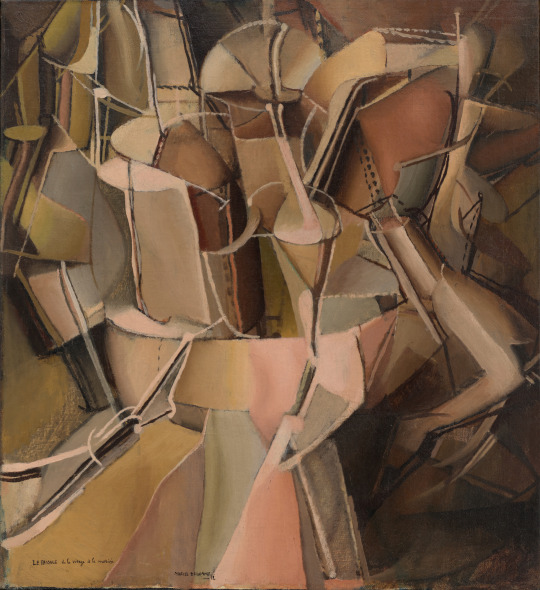
Marcel Duchamp (American, born France, 1887-1968). In the previous post, I mentioned the machine aesthetic of some of Hans Arp’s contemporaries. DADA/Surrealist artist and conceptual art progenitor Duchamp’s early works include cubist-derived abstractions that appear to depict nonspecific machine/insect hybrids. Paintings like this led to his monumental Large Glass, an enigmatic combination of unorthodox materials, obscure narrative, and invented science.
The Passage from Virgin to Bride 1912. Oil on canvas, 23 3/8 x 21 1/4 inches. Museum of Modern Art, New York.
1 note
·
View note
Photo
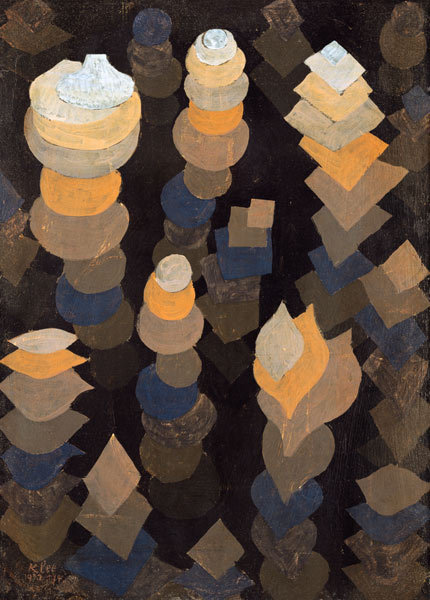


Paul Klee (German, born Switzerland 1879-1940). It seems unlikely that Klee was describing the growth pattern of the specific plant shown at bottom, yet the works he made in this series of paintings look quite similar. It’s possible he started out with plants in mind, but I suspect he first found the technique—stacked shapes in increasingly lighter values—and then imaginatively connected it to plant growth.
Growth of the Night Plants (Wachstum der Nachtpflanzen) 1922. Oil on cardboard, 18 x 13 inches. Source.
Ripening Growth 1921. Watercolor over pencil and collage on board, 16.5 x 9.37 inches. Source.
“Crassula hybrid Tom Thumb.” Source.
2 notes
·
View notes
Photo
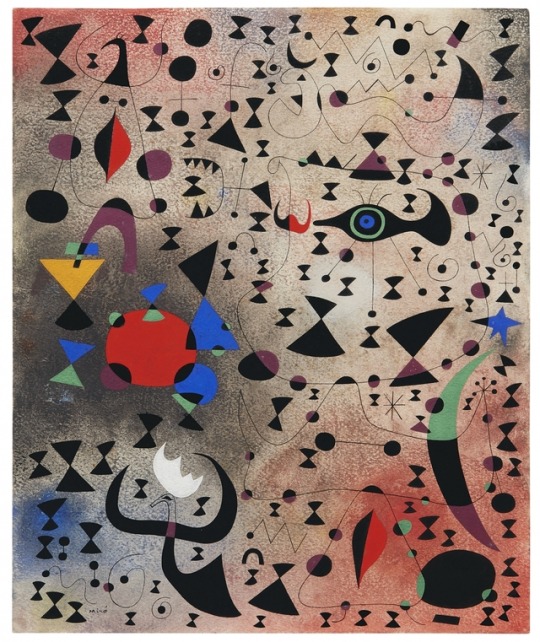
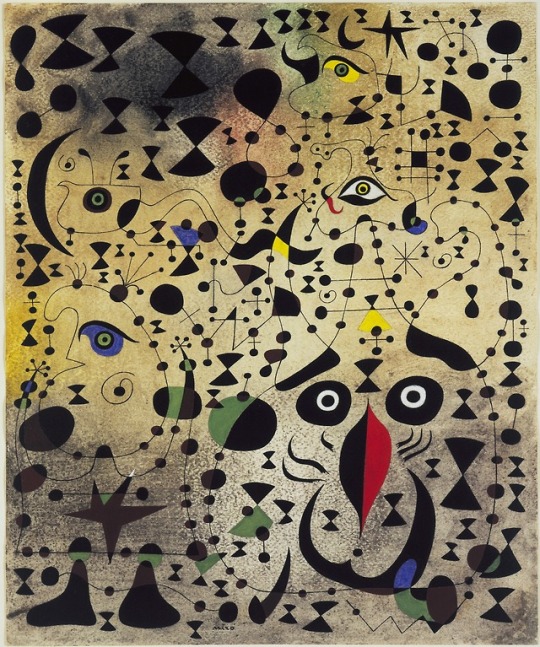
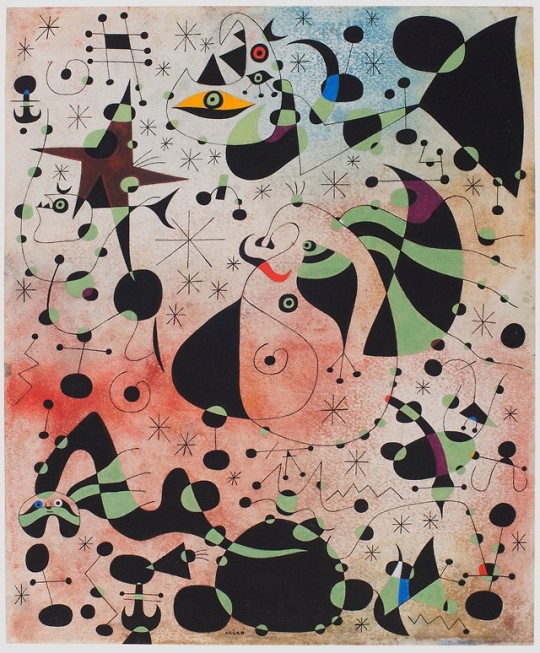
Joan Miró (Spain 1893-1983). This series of small works, made under difficult circumstances in Europe during World War II, are among my favorite paintings. Miro began each one by carefully rubbing oil paint into the surface of his watercolor paper. The delicate blended colors provided him with an atmospheric space in which to compose and arrange his complex pattern of shapes and symbols. As in the large paintings, the contrast between softly blended ground and flat, hard-edge shapes and precise linework is striking.
Femmes au bord du lac à la surface irisée par le passage d’un cygnet (Women at the Edge of the Lake Made Iridescent by the Passage of a Swan) May 14, 1941. Gouache and oil wash on paper, 18 1/8 x 15 inches. Private Collection. Source.
The Beautiful Bird Revealing the Unknown to a Pair of Lovers (Le Bel oiseau déchiffrant l'inconnu au couple d'amoureux) 1941. Gouache, oil wash, and charcoal on paper; 18 x 15 inches. Museum of Modern Art, New York.
The Passage of the Divine Bird (Le Passage de l’oiseau divin) Mont-roig, September 12, 1941. Gouache and oil wash on paper, 18 x 14 7/8 inches. Toledo Museum of Art, Toledo, Ohio. Source.
3 notes
·
View notes
Photo
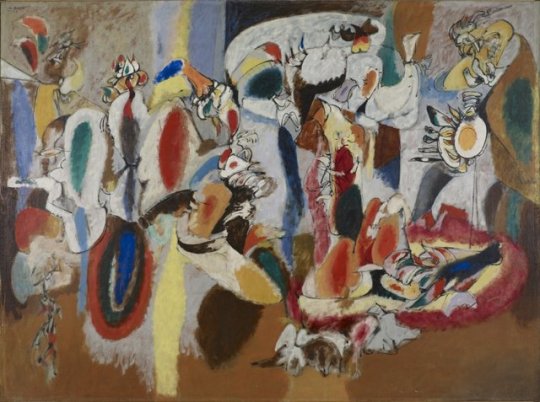
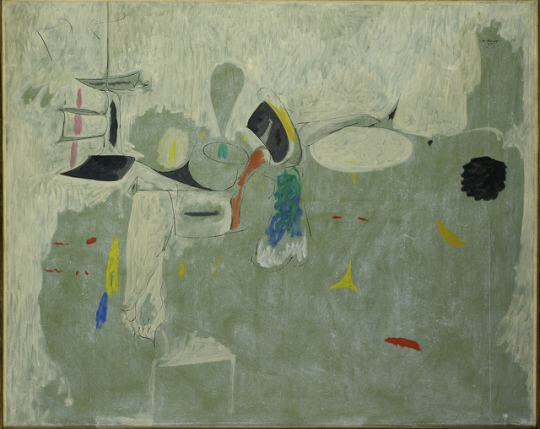
Arshile Gorky (American, born Armenia. 1904-1948). Gorky was influenced by Surrealist painting and was a major contributor to the development of American Abstract Expressionism. His painted forms always stop short of being recognizable as bodies, faces, or limbs, but his dancing line has a descriptive quality, and his interest in the organic world is obvious.
The Liver is the Cock’s Comb 1944. Oil on canvas, 73 ¼ x 98 3/8 inches. Albright-Knox Gallery, Buffalo, New York.
The Limit 1947. Oil on paper, mounted on canvas, 50 ¾ x 62 inches. Private collection. Source.
1 note
·
View note
Photo


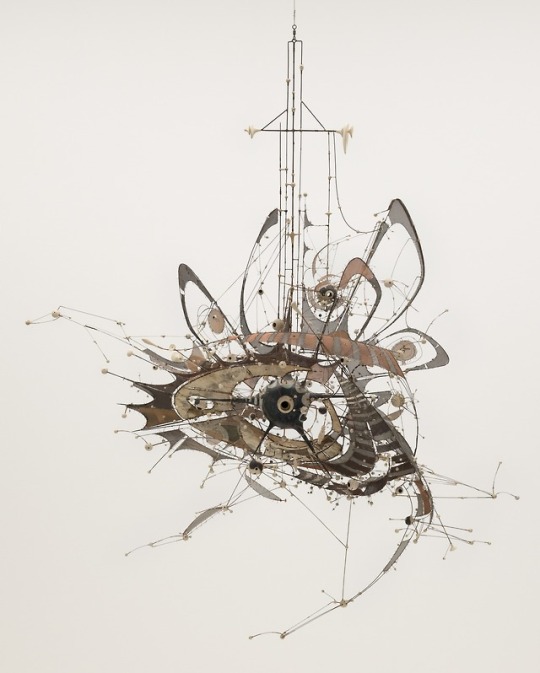
Lee Bontecou (American b. 1931). Starting in the 1960s, Bontecou created an unusual form of relief painting that seemed to meld organic shapes with machine parts. Here are two drawings and a hanging sculpture from a later stage in her career. A sort of alien biology is suggested here, with shapes that could have been inspired by Surrealist art as much as by a walk on the beach at low tide.
Untitled 1987. Graphite and colored pencil on paper, 9 ½ x 12 ½ inches. Hammer Museum, Los Angeles.
Untitled 1993. Colored pencil on black paper, 18 x 24 inches. Museum of Modern Art, New York.
Untitled 1980-98. Welded steel, porcelain, wire mesh, canvas, grommets, and wire; 7 x 8 x 6 feet. Museum of Modern Art, New York.
2 notes
·
View notes
Photo
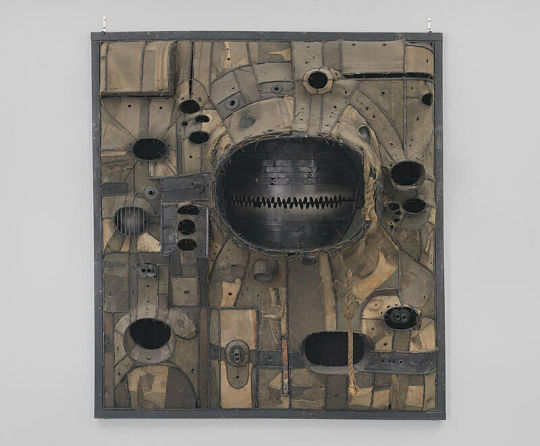

Lee Bontecou (American b. 1931). Bontecou’s early relief works attracted considerable attention, causing the artist to retreat from the art-world spotlight for a number of years. She used canvas and steel to construct scarred industrial surfaces pierced with mouth-like openings and pores. At times she also seems to borrow shapes and curves from artwork of the indigenous peoples of the Pacific Northwest. The picture at bottom shows the artist working in her studio in the mid-1960s.
Untitled 1961. Welded steel, canvas, wire, and rope; 72 1/2 x 66 x 24 3/4 inches. Whitney Museum of American Art, New York.
Ugh Mulas (Italian 1928-1973). Lee Bontecou in her Wooster Street studio, New York 1964. Source.
1 note
·
View note
Photo


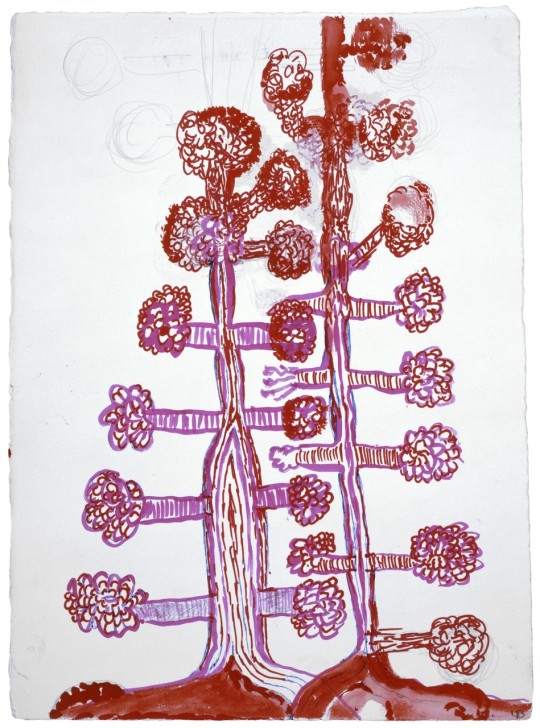

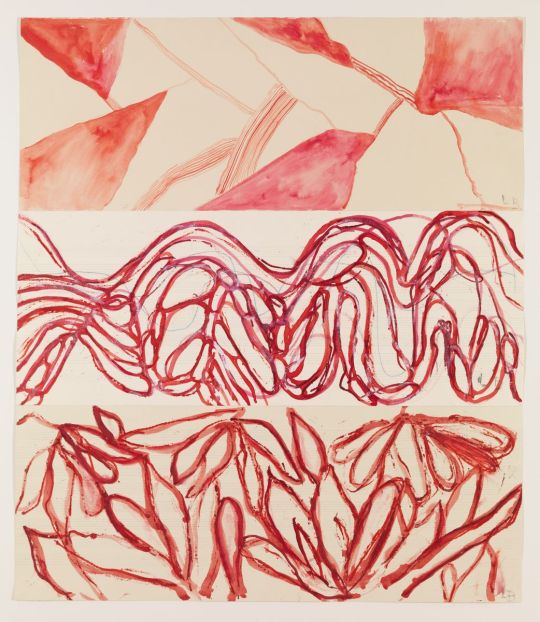
Louise Bourgeois (American, born France, 1911-2010). We looked at some ink drawings by this artist a few weeks ago. Bourgeois was at one time associated with the Abstract Expressionists, and her work appears to have an affinity with Surrealism, but she outlived both of those movements and produced difficult-to-categorize artwork into the early part of the 21st century. Examples of abstract biomorphism abound in her work, alongside dreamlike figuration and text-based imagery.
Untitled 1950. Gouache, pencil, and colored pencil on colored paper; 28 x 21 3/8 inches. Museum of Modern Art, New York.
Nature Study #1 1985. Bronze, dark and polished patina; 7 x 19 x 7 inches. Source.
Untitled 1997. Watercolor, ink, pencil, and opaque white on paper; 15 x 11 1/4 inches. Source.
Jitterbug 1998. Lithograph, 18 1/4 x 24 inches. Museum of Modern Art, New York.
The Red Sky (detail of a multi-part work) 2009. Watercolor, ink, gouache, pencil, colored pencil, and etching on paper; 11 panels total. Source.
0 notes
Photo
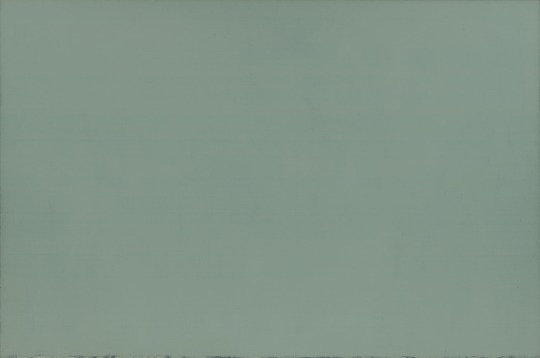
Brice Marden (American b. 1938). While this painting might not seem, at first glance, to have a direct relationship to the landscape, it was part of a series of works inspired by Marden’s visit to an olive grove in Greece. Marden’s colors are often drawn from nature. The individual panels in the Grove Group series are composed of foliage-inspired greens, blues drawn from Mediterranean water and sky, and rocky, earthy grays and browns. It is my understanding that the green pigment he used in some of the paintings from this series is terre verte, a mined green mineral pigment whose use dates back at least as far as the Renaissance. That would suggest that this landscape-derived work might in fact contain pigment dug from the earth itself. Marden’s fascination with terre verte continues to this day; in 2017 he exhibited a body of work using that single pigment, each painting featuring terre verte paint sold by different manufacturers.
Grove Group I 1972-73. Oil and wax on canvas, 69 x 105 inches. Museum of Modern Art, New York.
1 note
·
View note
Photo
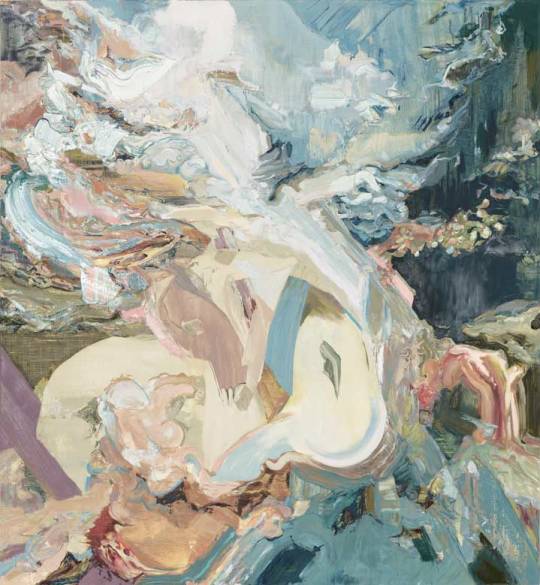
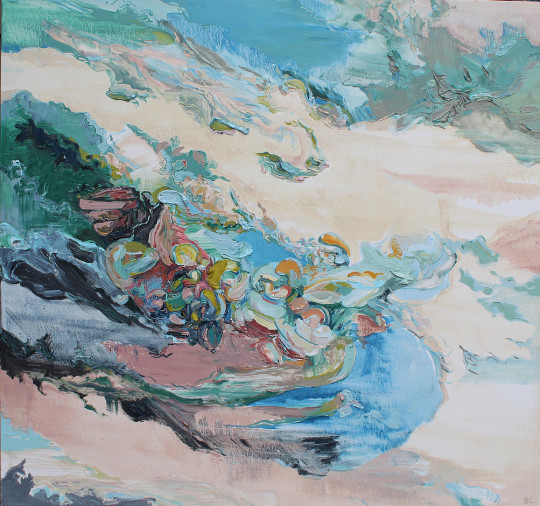

Drie Chapek (American b. 1979). One does not need to look very hard to see intimations of landscape in Chapek’s work. I once heard her give an artist talk in which she talked about walking through a damp, muddy landscape, feeling the soggy soil underneath her feet. These paintings seem evocative of experiences like that.
Unravel 2018. Oil on canvas, 52 x 48 inches.
Serene 2018. Oil on canvas, 34 1/2 x 37 inches.
Want Willows Weeping 2019. Oil on canvas, 52 x 48 inches.
1 note
·
View note
Photo
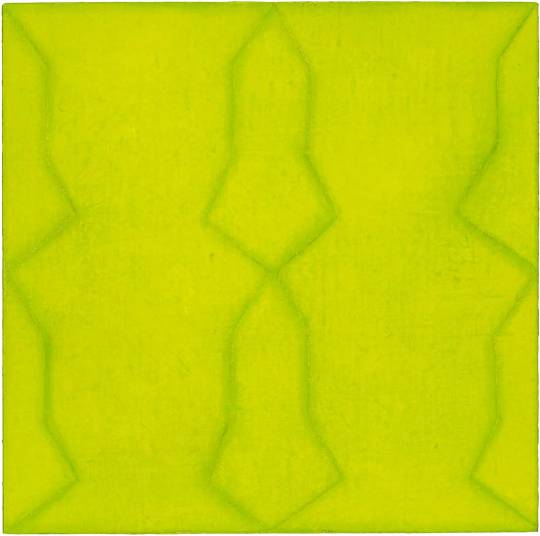

Lynne Woods Turner (American b. 1951). A very different evocation of landscape. I once saw a show pairing Turner’s spare abstractions with Drie Chapek’s lush works, and the contrast was striking. Yet, both artists mentioned landscape in their talks. Turner specifically referred to topiary with regard to these two paintings, and I think the inspiration is clear. These paintings are deceptively simple-looking. Turner’s techniques include rubbing and sanding her surfaces, applying and reapplying color in many layers and generating a surface that communicates all of the love and attention she has directed towards it.
Untitled 9274 2017. Pencil and oil on linen over panel, 14 x 14 inches.
Untitled 9297 2018. Oil on linen over panel, 10 x 8 inches.
0 notes
Photo

Richard Diebenkorn (American 1922-1993). In 1976, Diebenkorn moved to the Ocean Park neighborhood of Venice, California, where he started making the series of paintings named for his new home. The Ocean Park series would ultimately come to number 145 paintings, the body of work he is best known for. The light and space of his location influenced the construction of these works, which contain implied horizons, lawns, architecture, and roads.
Ocean Park #105 1978. Oil and charcoal on canvas, 100 x 93 inches. Modern Art Museum of Fort Worth, Forth Worth, Texas.
3 notes
·
View notes
Photo

Joan Mitchell (American 1925-1992). Mitchell wrote, in a letter dated 1958, “...I paint from remembered landscapes that I carry with me.” Her titles refer to gardens and other locations; La Seine was painted the year she purchased a property overlooking that river in France. Her use of multiple panels is always interesting. Here, the panels are arranged to form a broad, landscape-like horizontal, but there is also repetition from panel to panel, especially along the bottom, where those dark rectangles move about; taken as a whole, the composition is surprisingly symmetrical.
La Seine 1967. Oil on canvas, four parts, 76 7/8 x 165 7/8 inches. Governor Nelson A. Rockefeller Empire State Plaza Art Collection, New York State, Office of General Services. Source.
1 note
·
View note